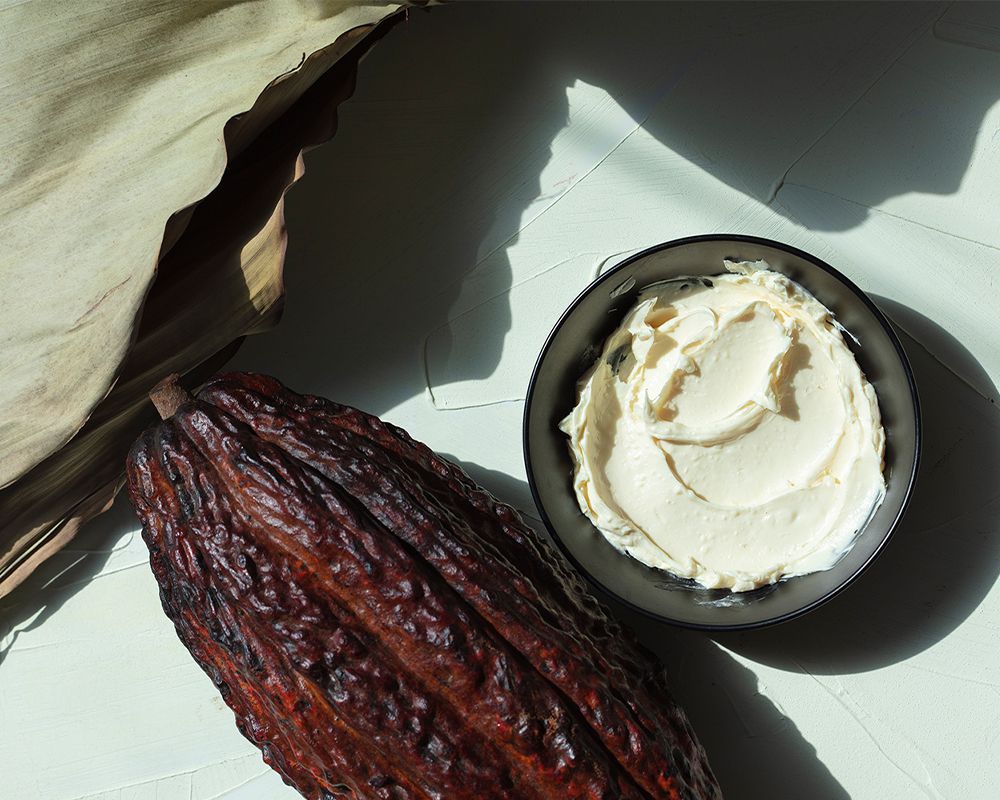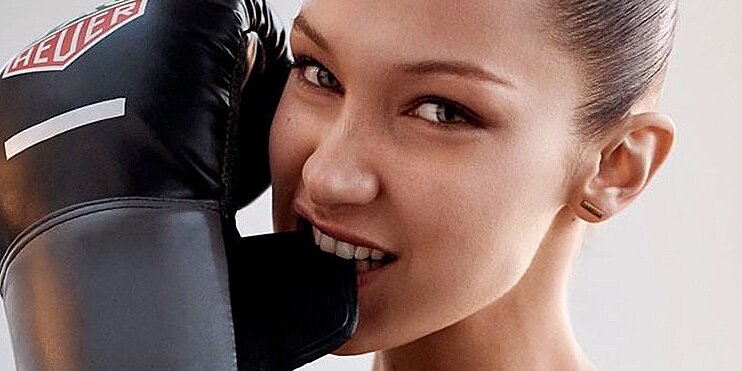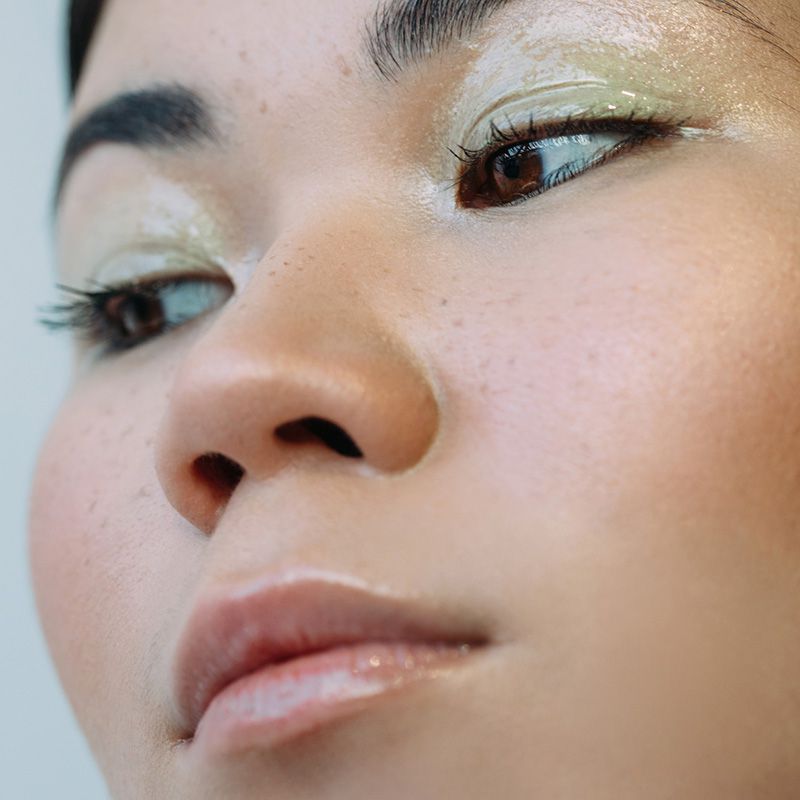Post-Inflammatory Erythema: What It Is and How to Treat It
If you’ve ever experienced acne, you know that once a pimple itself is finally gone, the skin can often look red or irritated in the area where the original blemish was. There’s a technical term for this: Post-Inflammatory Erythema, often referred to as PIE. And it can often be just as stubborn and frustrating as the original acne itself.
“When inflammation occurs associated with an acne bump, it can trigger an increase and dilation of blood vessels and vascularity,” explains board-certified dermatologist Marisa Garshick, MD. “Which is what can give the skin a red appearance, related to an increased concentration of blood vessels in that area. Additionally, the general redness that goes along with the inflammation can linger and also contribute to post-inflammatory erythema.” So, how does one treat post-inflammatory erythema? Read on for best tips and solutions from Garshick and board-certified dermatologist Farhaad Riyaz, MD.
What Is Post-Inflammatory Erythema?
“PIE, or post-inflammatory erythema, refers to pink or reddish patches that occur as a result of trauma that causes inflammation to the skin,” says Riyaz “This is often due to inflamed acne. Mild, non-inflamed acne, which includes blackheads and whiteheads, or comedonal acne, is not typically a cause of PIE. Acne with inflamed papules and pustules is more likely to result in PIE. Papules are red inflamed bumps that are usually less than 5 mm or one-tenth of an inch, with pustules bearing a white or yellow center.”
“Post-Inflammatory erythema can vary in intensity, in some cases appearing like a faint pink color while in other cases appearing as more of a deep red,” adds Garshick. “Sometimes as the post-inflammatory erythema fades and begins to go away, the color can shift as well.”
Both dermatologists share that PIE can impact the face and body anywhere that acne occurs, including common areas such as the neck, chest, and back. As for who is impacted, “individuals of all ages can be affected by post-inflammatory erythema but it generally tends to be more common in those with fair skin, while those with darker skin types tend to experience more post-inflammatory hyperpigmentation, which refers to brown or dark spots that result from an increase in pigment cells following an inflammatory process,” Garshick explains.
Causes and Prevention
Oil
According to Riyaz, acne sufferers commonly have higher amounts of oil production, and the oil is thicker and stickier than those with balanced skin. What does this mean? Oil causes a build-up in the follicle and blocks the duct, causing pimples to form. “Acneic skin also has lower levels of free fatty acids like linoleic acid, and higher amounts of squalene and wax esters, which are believed to contribute to acne,” he adds.
Bacteria
“While all skin has bacteria, acne sufferers have a higher level of P. acnes bacteria than others,” says Riyaz. “P. acnes feed on the excess oil and cause inflammation, redness, and infection, which manifests as acne. When the bacteria digest the trapped oil, this produces fatty acid waste that causes the irritation.” This exact irritation can then translate to PIE, often leading to pink or red patches on the skin.
Harsh Products
If you’ve ever used a harsh product that did not agree with your skin, chances are you’ve dealt with irritation and redness as a result. “While there are many treatments for acne, it is important to not overdo it and to avoid harsh soaps and abrasive scrubs which can lead to skin irritation and can exacerbate redness and post-inflammatory erythema,” says Garshick. “Avoid using too many active ingredients at the same time to avoid disrupting the skin barrier and causing excess irritation.”
Picking
“Picking, popping, or squeezing acne can increase the risk of PIE, as it can trigger more inflammation which can subsequently lead to more redness and scarring,” says Garshick. This is one of the key reasons why it is best to avoid touching your pimples, no matter how tempting it may be.
“If you are experiencing a scab or have already picked at a breakout, a way to reduce the potential for post-inflammatory erythema is to actually treat that scab as you would any other wound to help facilitate the healing process,” she continues. “If you have a large pimple, it can also help to visit your board-certified dermatologist for a cortisone injection which can help to reduce the breakout.”
Hormones
Whether you learned it the hard way growing up or learned it in health class, you’re likely aware that any shift in hormone levels can result in acne. Riyaz confirms: “With high levels of testosterone leading to more oil production and breakouts, puberty, monthly menstrual cycles, polycystic ovary syndrome, perimenopause and menopause are the main hormonally-induced conditions that can trigger acne breakouts.”
Excess Dead Skin
A more under-the-radar cause of acne, excess dead skin can trigger PIE. “The excess oil stimulates and aggravates the walls of the follicles and contributes to the tendency to retain dead skin cells,” explains Riyaz. “Those with acne produce more skin cells—up to five times—as well as stickier than normal skin cells that aren’t properly shed. This is called retention hyperkeratosis.”
Treatment
Laser Treatment
While PIE can fade with time, Garshick tells us, lasers can be used to help expedite the resolution and work by targeting the blood vessels that may be contributing to the redness. “Specifically, lasers that can be used include PDL, IPL, and KTP lasers,” she says. “While you may see improvement from just one session, it can often take several sessions to achieve desired results. The laser may cause the redness to initially appear darker temporarily within the first few days after the laser, but then the redness will continue to subside.”
Niacinamide
“Niacinamide has added benefits of keeping skin hydrated while controlling oil and warding off acne flare-ups and help prevent PIE,” says Riyaz.
“It can be helpful to look for niacinamide-containing products to help with the post-inflammatory erythema, such as La Roche Posay’s Toleriane Double Repair Moisturizer or Pond’s Clarant B3 Dark Spot Correcting Cream ($20), which is made specifically for those with normal to oily skin,” adds Garshick. “Another great option is Vichy’s Mineral 89 Prebiotic Recovery and Defense Concentrate ($35) which contains niacinamide and helps to boost skin barrier repair and recovery while soothing redness.”
Tretinoin
If you catch acne early enough, tretinoin can help prevent the comedones from developing into inflammatory acne Riyaz tells us. “Tretinoin is 10- to 100-times more effective than over-the-counter retinoids. It works by exfoliating and stimulating cell turnover, reducing inflammation, and clearing pores. It also repairs damage to the microvascular system and collagen that can occur due to the bacterial infection of acne, and can reduce pH levels to help normalize the skin.” Tretinoin is prescription-only, so you’ll have to consult a doctor before trying. Popular Tretinoin brands include Retin-A Micro, Refissa, and Retin-A.
Benzoyl Peroxide
Benzoyl peroxide can be found in many over-the-counter acne treatments, making it an accessible treatment option. “Benzoyl peroxide reduces acne-causing bacteria, dead skin cell build-up, and irritation associated with acne,” says Riyaz. “Benzoyl peroxide reduces fatty acids and releases oxygen for an antimicrobial effect. The bacteria that cause acne cannot live in an oxygen-rich environment.”
Sunscreen
Reason 2,395,804 to always wear sunscreen: Garshick shares that sunscreen can help play an important role in reducing the overall appearance of scarring and marks. “More sun exposure can worsen the appearance of the blemishes and cause it to take longer to subside,” she says. “Using a sunscreen that also offers some tint may help to provide some natural coverage to reduce the appearance of red marks. Some examples include DRMTLGY’s Physical Universal Tinted Moisturizer SPF44 ($28) and Avène’s Solaire UV Mineral Multi-Defense Tinted Sunscreen.”
Clindamycin
Clindamycin is a topical antibiotic that can help kill the bacterial cause of acne. According to Riyaz, clindamycin can help reduce inflammatory breakouts by up to 50 percent within twelve weeks. “To help decrease the risk of antibiotic resistance, docent prescribes benzoyl peroxide at the same time and only prescribes clindamycin for the shortest duration needed,” he says. “You will most likely be prescribed tretinoin as well since these medications in combination are proven to help decrease breakouts.”
Dapsone
Dapsone is a bacteriostatic antibacterial sulfonamide drug (antibiotic) used in the treatment of many systemic and dermatologic conditions, including acne.1 It also acts as an anti-inflammatory, Riyaz shares, making it especially helpful in preventing PIE. Dapsone can be found in both ingestable and topical forms, including the popular dapsone gel, Aczone.
Pimple Patches
The year is 2021, and it’s now in fashion to walk around with our pimple patches (thank you, Starface). Garshick shares that pimple patches can be helpful in cases of PIE, and can also help prevent PIE, especially in someone who is prone to picking or popping. “By protecting the skin, pimple patches prevent further inflammation and irritation which can reduce the potential for redness and scarring,” Garshick shares. “For example, ZitSticka HyperFade ($34) incorporates hyaluronic acid, niacinamide, and vitamin C to help improve the appearance of blemishes and post-acne marks.”
Sulfur
“Sulfur is an antibacterial, keratolytic, and anti-inflammatory mineral, making it an excellent ingredient to treat acne and help prevent PIE,” Riyaz shares. “Despite the slight smell, the benefits are certainly worth it and it’s less irritating than many other skin care ingredients.”
Metronidazole
This antibiotic does it all, Riyaz shares. The anti-inflammatory, antibacterial, and anti-parasitic properties work together to treat acne. It also helps reduce and prevent PIE redness. Popular brands include Metrogel, Nuvessa, and MetroCream, and is only available by prescription.
Before applying, you’ll want to have clean, freshly washed skin. When applying, be sure to cover the entire irritated and red surface area, not just pimples themselves. Dryness can often result from Metronidazole, so it’s important to keep the skin hydrated and moisturized when using it.









